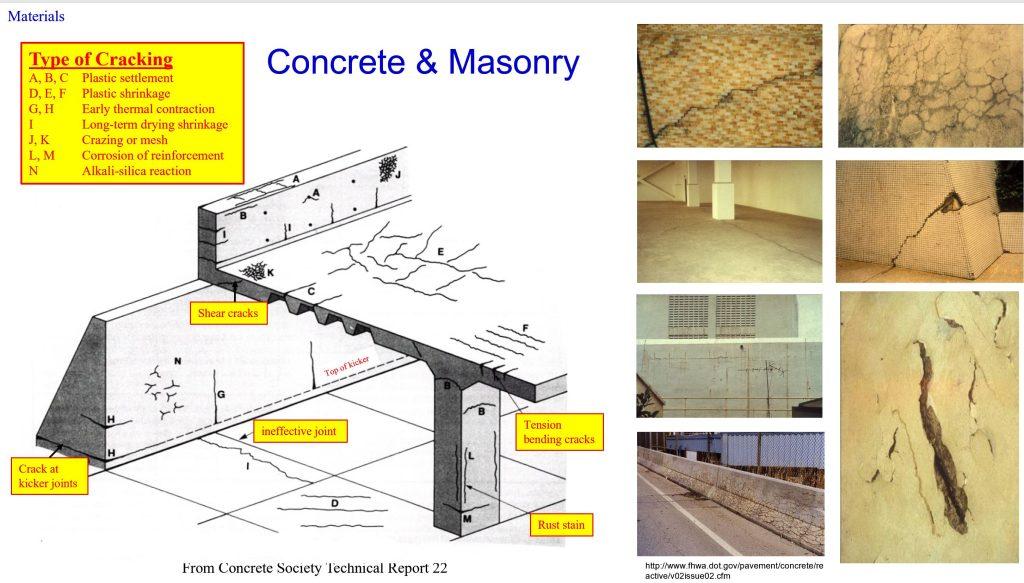Case 1 – Structural Cracks
- Introduction
- Causes of Defects
- Good Practices
- Standards
- Maintenance and Diagnostics
- Remedial
- Similar Cases
- References
Structural Cracks

Introduction
Type of Building: Commercial
A live (active) crack is shown on a reinforced concrete wall in a basement of a commercial building car park. Aging and deterioration of the concrete structures and many other external factors such as ground settlement can cause such cracking. The crack was identified as a post-hardening structural crack caused by structural deficiency due mainly to ground settlements.
A live (active) crack is usually referred to one that continues to increase in width and/or length, while a dead (passive) crack does not change in both width and length.
A structural crack is one that is usually caused by excessive stress concentration due to overloading, differential movements etc., while a non-structural crack is usually cause by material issues including shrinkage and creep, wear and tear, reinforcement corrosion, or environmental issues including water seepage, inadequate provisions for thermal and moisture movements.
It must always be reminded that concrete although is strong in compression, it is weak in tensile/flexural strength.
